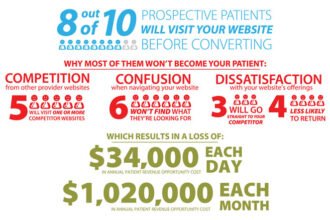 The US Dept. of Health and Human Services has directed the supplanting of the ICD-9-CM code sets, those currently utilized by physicians, medical billers and coders to report healthcare procedures and diagnoses, with ICD-10 codes. Implementation is to be effected on October 1, 2014.
The US Dept. of Health and Human Services has directed the supplanting of the ICD-9-CM code sets, those currently utilized by physicians, medical billers and coders to report healthcare procedures and diagnoses, with ICD-10 codes. Implementation is to be effected on October 1, 2014.
 The US Dept. of Health and Human Services has directed the supplanting of the ICD-9-CM code sets, those currently utilized by physicians, medical billers and coders to report healthcare procedures and diagnoses, with ICD-10 codes. Implementation is to be effected on October 1, 2014. Its implementation will impact and completely change the current coding system. It will necessitate a huge amount of effort to implement, and it isn’t going to go away. Individual and organizational health providers need to get on board with training if they expect to get paid for their services after October 1, 2014.
The US Dept. of Health and Human Services has directed the supplanting of the ICD-9-CM code sets, those currently utilized by physicians, medical billers and coders to report healthcare procedures and diagnoses, with ICD-10 codes. Implementation is to be effected on October 1, 2014. Its implementation will impact and completely change the current coding system. It will necessitate a huge amount of effort to implement, and it isn’t going to go away. Individual and organizational health providers need to get on board with training if they expect to get paid for their services after October 1, 2014.
Significant changes will be required in most practices. Paper encounter forms will be all but extinct and some EHR’s may not have all the tools you will need. In addition, and most important is the training and ramp up for doctors and staff. Physicians, medical staff and administrators will require extensive training. Medical practice guidelines and policies will be impacted. Forms and general paperwork will also require updating.
For practices that need assistance or comprehensive preparation, there are several “Boot Camps” available nationwide. They provide a two-day, all-inclusive training for those tasked with the implementation of ICD-10 in their organization or practice.
There are 25 countries that currently use ICD-10 coding in their healthcare system for resource allocation and reimbursement. Worldwide, 110 countries utilize the unmodified version of the ICD-10 codes for cause of death and statistical reporting. In the U.S., anyone who is covered by HIPAA is required to transfer from ICD-9 codes to ICD-10. However, it should be noted that the conversion to ICD-10 has no impact on CPT coding, either for physician services or for outpatient procedures.
Initiated in 2012, the implementation training process is currently in stage three of five stages of the General ICD-10-CM Code Set. At this point, all health providers should be aware of the progression of the implementation strategy and time frame. The timeline for the completion of the transferal process differs for small hospitals, payers and for small, medium and large practices. For all but the payers, the initial planning should be completed at this time, and preparation for testing and comprehensive training should be in progress.
The basic structural sequence of the code is as follows:
Characters 1 – 3: Disease Category
Character 4: Disease Etiology
Character 5: Body Part Impacted
Character 6: Disease Severity
Character 7: Placeholder to Accommodate Any Necessary Code Extension to Elaborate Specificity
ICD-10 is here to stay. It requires that every health services provider gets trained with all the new procedural nuances or has someone who can effectively perform to its expectations.
(Image: freedigitalphotos.net)








